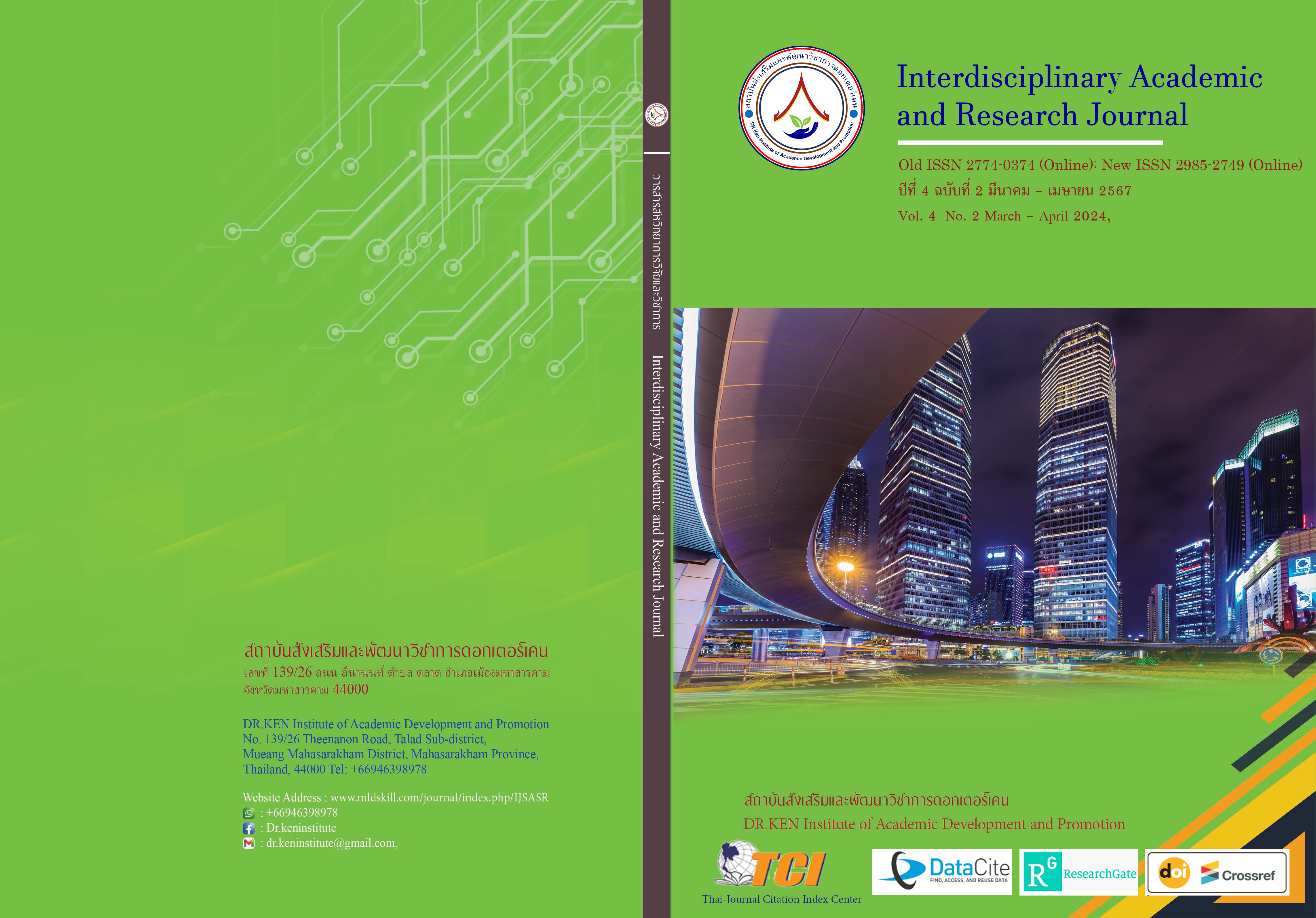The Use of the Miro Digital Tool in Managing Learning to Promote Teamwork Competencies Among Students in the Elementary Education Program at Valaya Alongkorn Rajabhat University under the Royal Patronage
DOI:
https://doi.org/10.60027/iarj.2024.274361Keywords:
Miro Digital Tool; , Teamwork Competencies; , Elementary Education ProgramAbstract
Background and Aims: This study aims to enhance the necessary competencies that students can apply to develop future learners at the elementary education level. This research aimed to investigate the impact of using the digital tool Miro in learning management to promote teamwork competencies among elementary education students.
Methodology: The target group for this study consisted of 22 second-year students majoring in elementary education at Valaya Alongkorn Rajabhat University Under the Royal Patronage during the academic year 2566. The research instruments were four activity plans with the digital tool Miro and a teamwork competency assessment, which was administered before, during, and after the experiment. Data analysis involved comparing average scores before, during, and after the experiment. Statistical analysis involved mean, standard deviation, and repeated measures ANOVA.
Results: The findings revealed statistically significant differences at .05 level in teamwork competency scores at various points in time. The average teamwork competency scores increased after the experiment compared to before and during the experiment. The research suggests that using Miro as a digital tool for collaborative learning positively impacts teamwork competencies among elementary education students.
Conclusion: The average teamwork competence scores, measured at different time intervals, show a statistically significant increase after the experiment compared to before. The study suggests that the use of the digital tool Miro in learning management effectively promotes enhanced teamwork competence among elementary education students.
References
กมลวรรณ ตังธนกานนท์ (2566) การประเมินโดยใช้เกณฑ์การให้คะแนนแบบรูบริก. เอกสารประกอบการบรรยายหลักสูตร DTCA 2023
คณะครุศาสตร์มหาวิทยาลัยราชภัฏวไลยอลงกรณ์ ในพระบรมราชูปถัมภ์. (2562). หลักสูตรครุศาสตร์บัณฑิต สาขาวิชาการประถมศึกษา (หลักสูตรใหม่) ฉบับปี พ.ศ. 2562. ปทุมธานี: โรงพิมพ์ มหาวิทยาลัยราชภัฏวไลยอลงกรณ์ ในพระบรมราชูปถัมภ์.
ดวงกมล ไตรวิจิตรคุณ (ม.ป.ป.) วิธีวิทยาการวิจัยการศึกษา. ภาควิชาวิจัยและจิตวิทยาการศึกษา คณะครุศาสตร์ จุฬาลงกรณ์มหาวิทยาลัย.
รณธิชัย สวัสดิ์, รัตนะ บัวสนธ (2022). การจัดการศึกษาฐานสมรรถนะ. วารสารศิลปศาสตร์ ราชมงคลสุวรรณภูมิ, 4(1), 187-201.
วัชรศักดิ์ สุดหล้า (2023). Platforms for assessing digital collaboration teamwork. เอกสารประกอบ การบรรยายหลักสูตร DTCA 2023
วิชัย เสวกงาม (2023). Competency-Based Education. เอกสารประกอบการบรรยายหลักสูตร DTCA 2023
สำนักงานเลขาธิการสภาการศึกษา.(2562). แนวทางการพัฒนาสมรรถนะผู้เรียน ระดับการศึกษาขั้นพื้นฐาน. นนทบุรี:21 เซ็นจูร
Allah, R. K. (2023). The Use of Miro in Teaching Practice. Exchanges: The Interdisciplinary Research Journal, 10(3), 77-91.
CBE Thailand, (2021). Basic Education core curriculum framework (competency-based curriculum). Retrieved from: https://cbethailand.com/
Freitag, N., Serafin, A., & Schmidt, S. (2022). Learning Analytics Dashboards for Online Collaboration Whiteboards: Feasibility Check of an Activity Dashboard to Support the Evaluation of Student Activity within Miro. International Journal of Management, Knowledge and Learning, 11, 207-214. https://doi.org/10.53615/2232-5697.11.207-214
Johnson, (2022). Miro, Miro: Student perceptions of a visual discussion board. In Proceedings of the 40th ACM International Conference on Design of Communication (pp. 96-101).
Prasarn, O., Piemjard, W. and Duanyai, E. (2022). The development of community-based learning activities to promote higher-order thinking, teamwork, and collaborative competency for secondary school students (in Thai). Journal of Legal Entity Management and Local Innovation, 8(7), 13-32.
Downloads
Published
How to Cite
Issue
Section
License
Copyright (c) 2024 Interdisciplinary Academic and Research Journal

This work is licensed under a Creative Commons Attribution-NonCommercial-NoDerivatives 4.0 International License.
Copyright on any article in the Interdisciplinary Academic and Research Journal is retained by the author(s) under the under the Creative Commons Attribution-NonCommercial-NoDerivatives 4.0 International License. Permission to use text, content, images, etc. of publication. Any user to read, download, copy, distribute, print, search, or link to the full texts of articles, crawl them for indexing, pass them as data to software, or use them for any other lawful purpose. But do not use it for commercial use or with the intent to benefit any business.
















.png)


